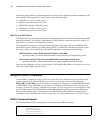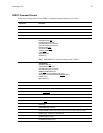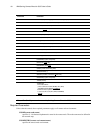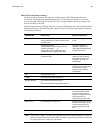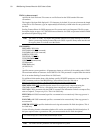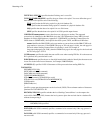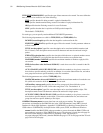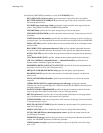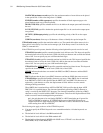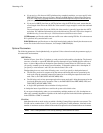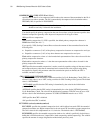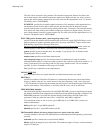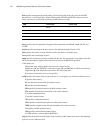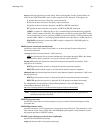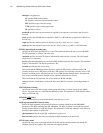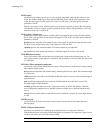
54 IBM Sterling Connect:Direct for i5/OS User’s Guide
MAXRCDS(maximum-records) specifies the maximum number of records that can be placed
in the spooled file. Valid values range from 1–500000.
FILESEP(number-of-file-separators) specifies the number of blank separator pages to be
placed between each copy of the file printed.
HOLD(*YES|*NO) specifies whether the file is to be held on the output queue until released by
the user.
SAVE(*YES|*NO) specifies whether the spooled output file is to be saved on the output queue
once printed.
OUTPTY(*JOB|output-priority) specifies the scheduling priority of the file on the output
queue.
USRDTA(user-data) allows up to 10 characters of data to identify the spooled output file.
XTRAN(table-name) specifies the translation table to use. The named table object must exist in a
library that is in the library list of the session manager job. If the library name is not in the list, the
CDRCV command fails.
If the XTRAN keyword is present, then the following related optional keywords can also be used:
XTRANLSO (so-code) specifies extended translate local shift-out code. This keyword specifies
the hexadecimal code to use for the local (i5/OS side) shift-out character and overrides the default
value of 0E. You can specify any two valid hexadecimal digits.
XTRANLSI (si-code) specifies extended translate local shift-in code. This keyword specifies the
hexadecimal code to use for the local (i5/OS side) shift-in character and overrides the default
value of 0F. You can specify any two valid hexadecimal digits.
XTRANLDATA (MIXED
|DBCS) specifies extended translate local data format. This keyword
specifies the format of the data on the local (i5/OS side) of the COPY.
MIXED
indicates that the data can contain both DBCS and SBCS characters and that SO/SI
characters are used.
DBCS indicates that the data is pure DBCS characters and that no SO/SI characters are used.
XTRANPAD(pc) specifies that padding characters are in use. When DBCS data is translated
from EBCDIC to ASCII, PAD specifies that the SHIFT-OUT and SHIFT-IN characters are
replaced by a pad character to allow the displacement of fields within a record to remain
unchanged during translation.
When DBCS data is translated from ASCII to EBCDIC, PAD specifies that the input ASCII
DBCS file is in a padded format. The character immediately preceding a DBCS character or
string is overlaid by the SHIFT-OUT character. The character immediately following a DBCS
character or string is overlaid with the SHIFT-IN character. This allows the displacement of fields
within a record to remain unchanged during translation.
pc is the pad character to be used during EBCDIC to ASCII translation. pc is ignored for
ASCII to EBCDIC translations. If XTRANPAD is not used, the SI/SO characters are
stripped from the file when transferring from EBCDIC to ASCII, and added to the records
when sending from ASCII to EBCIDC.
The following rules apply to the use of the XTRAN keyword:
You must specify the XTRAN keyword to use extended translation. All other keywords are
optional.
The default for local shift-out is the IBM standard x0E.
The default for local shift-in is the IBM standard x0F.
The default local data format is MIXED with SO/SI in use. XTRAN is not allowed with
PRECMPR(*YES) or DECMPR(*NO)



